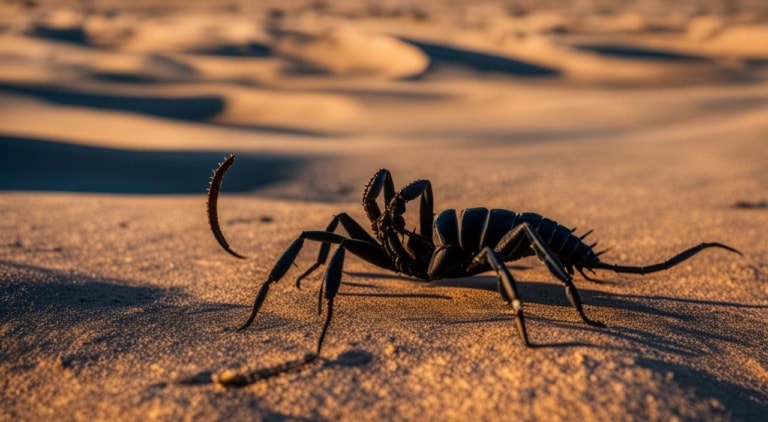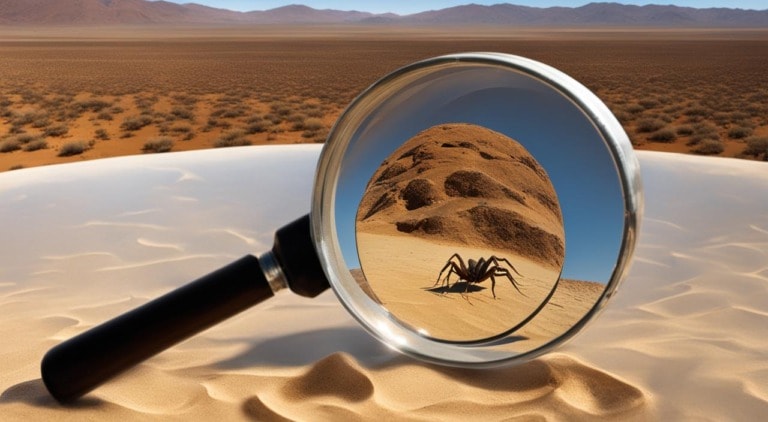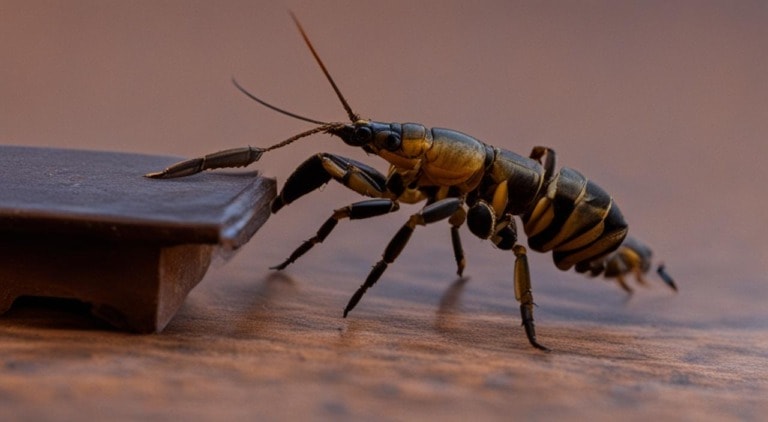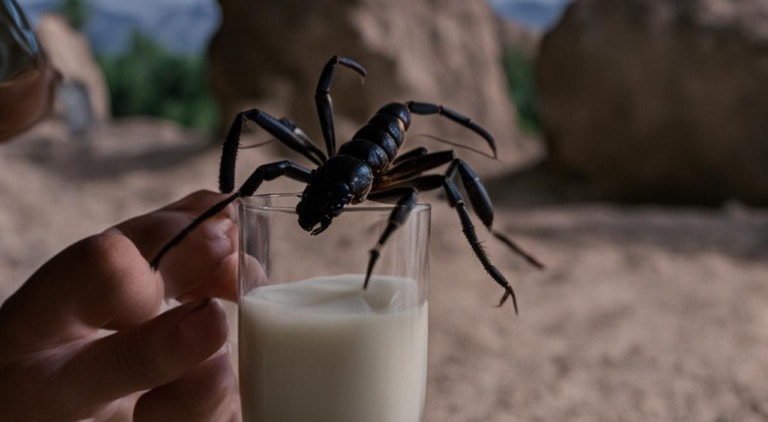
Scorpions are fascinating creatures known for their ability to glow under UV light.
This unique phenomenon involves a fluorescent reaction in their exoskeleton, specifically in a thin section called the hyaline layer. When exposed to ultraviolet light, scorpions emit a vibrant bluish-green glow that captivates the imagination.
Scientists have been intrigued by this glowing material and its purpose.
It remains a mystery whether scorpions secrete this substance or if it results from a chemical reaction. What’s even more astonishing is that even fossilized scorpions and preserved specimens retain this ability to glow under UV light.
The purpose of this glowing in scorpions is still uncertain, giving rise to various hypotheses. Some scientists suggest that it could serve as a form of sunblock, protecting the scorpions from harmful UV rays. Others propose that it aids in prey capture, confusing potential victims with its luminous glow.
Additionally, fluorescence may play a role in the recognition of other scorpions and enhance their sensitivity to light.
As we delve deeper into the mysteries of scorpions, we will explore what makes them glow under black light and examine the different theories surrounding this intriguing phenomenon.
What Makes Scorpions Glow Under Black Light?
The phenomenon of scorpions glowing under black light is still not fully understood. Scientists have established that it is something in the scorpions’ exoskeletons, specifically the hyaline layer, that causes them to fluoresce under ultraviolet (UV) light.
The hyaline layer can react to UV light, whether from black light or moonlight, resulting in the scorpion’s body emitting a vibrant glow. It is worth noting that scorpions do not glow immediately after molting; their cuticles must completely harden before they exhibit the blue-green fluorescence.
While the exact mechanism behind this fluorescence remains a mystery, researchers have made significant progress in understanding the science behind it.
Studies have shown that the presence of beta-carbolines in the scorpions’ exoskeletons is responsible for the fluorescence.
These compounds are believed to protect against UV radiation and are found in various animal cells. This suggests that the glowing phenomenon may have evolved as a means of safeguarding the scorpions from the harmful effects of UV light.
Factors Affecting Scorpion Fluorescence
- The intensity of the fluorescence varies among different species of scorpions, suggesting that genetic factors play a role in determining the brightness of the glow.
- The age and maturity of the scorpion can also influence the fluorescence. As mentioned earlier, scorpions do not glow immediately after molting, but rather once their cuticles have fully hardened.
- Environmental factors such as temperature and humidity can affect the fluorescence. Higher temperatures and humidity levels have been observed to enhance the intensity of the glow.
The ability of scorpions to glow under black light is a fascinating natural phenomenon that continues to intrigue scientists. While progress has been made in understanding the factors involved, there is still much to uncover about the exact mechanisms and purpose of scorpion fluorescence.
Further research and experimentation are needed to shed light on this mesmerizing aspect of these nocturnal creatures.
Why Do Scorpions Glow?
The exact reason why scorpions glow under UV light remains a subject of scientific speculation. These nocturnal predators possess a unique ability to emit a vibrant glow, but the purpose behind this phenomenon is still not fully understood.
Theories:
- Sunblock hypothesis: Some scientists propose that the fluorescence acts as a form of sunblock, protecting the scorpions from the harmful effects of UV rays. This theory suggests that the glowing exoskeleton provides a natural shield against excessive sun exposure.
- Prey confusion theory: Another hypothesis suggests that the scorpion’s glowing exoskeleton confuses their prey, making it easier for them to capture their target. The vibrant glow may disorient potential prey, allowing the scorpion to strike with greater efficiency.
- Recognition and communication: There is also speculation that fluorescence aids scorpions in recognizing and identifying fellow members of their species. The glow may serve as a visual signal, helping individuals communicate and establish their presence.
- Sensitivity to light: Some researchers believe that the glowing exoskeleton enhances the scorpions’ sensitivity to light, allowing them to navigate their surroundings more effectively. By leveraging their fluorescence, scorpions can find suitable hiding spots in the darkness and improve their chances of survival.
While these theories offer valuable insights, the true evolutionary advantage of scorpions glowing under UV light continues to be a subject of ongoing research and experimentation. Scientists are committed to unraveling the mysteries behind this fascinating phenomenon and gaining a deeper understanding of the hidden world of scorpions.
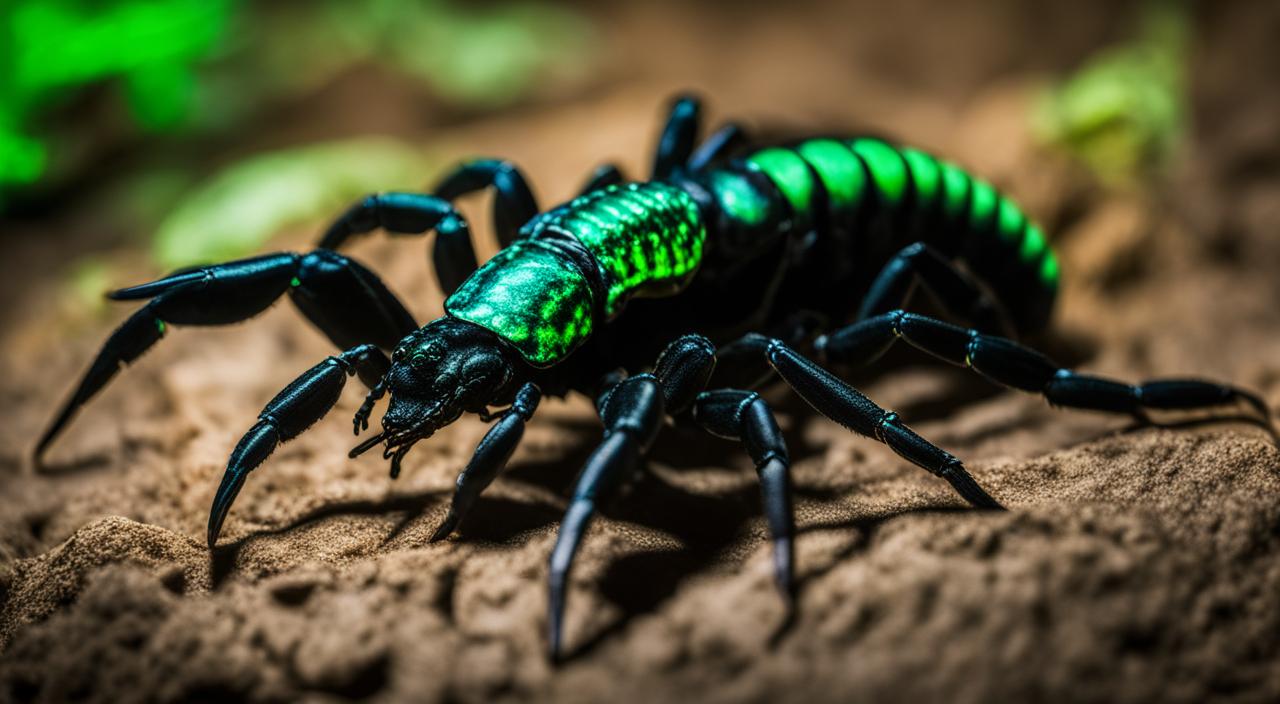
Scientific Studies and Research
Scientific studies have delved into the fascinating phenomenon of scorpions glowing under black UV light.
These studies have revealed that the presence of beta-carbolines in the scorpions’ exoskeletons is responsible for their fluorescence. Beta carbolines are compounds found in various animal cells and are believed to protect against harmful UV radiation.
Researchers have also focused on understanding the behavior and reactions of scorpions to different types of light.
Some studies suggest that scorpions utilize their entire bodies as light-detection devices, converting ultraviolet light into a mesmerizing blue-green glow. This unique ability allows them to navigate their surroundings, locate potential obstacles, and find suitable hiding places in the darkness.
The ongoing research and experimentation surrounding scorpions’ glowing capabilities aim to uncover the evolutionary advantage behind this intriguing adaptation. Scientists continue to investigate the intricate relationship between scorpions, black UV light, and the role of beta carbolines as a protective barrier in their exoskeletons.
By unraveling these mysteries, we gain a deeper understanding of these remarkable creatures and the complex mechanisms that allow them to thrive in their nocturnal habitats.


